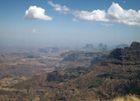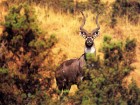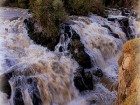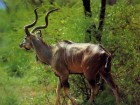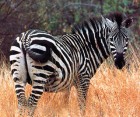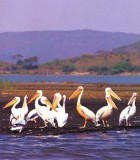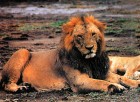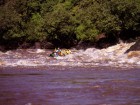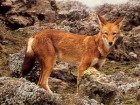Information on import & export or other Dealings in wildlife & wildlife production Ethiopia
CULTURAL ATTRACTIONS
National Parks
- Simien Mountains National Park
- Awash National Park
- Yangudi Rassa National Park
- Nechisar National Park
- Abijatta, Shala Lakes National Park
- Mago National Park
- Omo National Park
- Bale Mountains National Park
- Gambella National Park
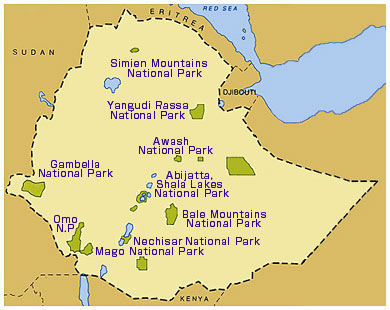
Simien Mountains National Park
The Simien mountain massif is a broad pleatu, cut off to the north and west by an enormous single crag over 60 kilometres long. The tableland is divided by gorges up to 1,000 metres deep, that can take more than two days to cross. Here live the Walia (Abyssinian) ibex, Semien red wolf and Gelada baboon – all endemic to Ethiopia – as well as the Hamadryas baboon, Klipspringer and bushbuck. The lammergeyer, Augur buzzard, Verr eavx’s eagle, Kestrel and Falcon also soar above this mountain. The Semien Mountains National Park covers 179 square kilometres of highland area at an average elevation of 3,300 metres.
Ethiopia’s highest peak, 4,620 metres Ras Dashen, stands adjacent to the park. The scenery is spectacular. The vegetation is principally Afro-Alpine, mountain savannah and heather. Temperature drop below freezing at night. Ethiopia, in fact, has a recorded list of 242 land mammals, of which 28 are endemic. The Semien Wolf is endemic and confined to mountain plateaux with dense tree heather and thickets, intermixed with bogs and swamps with sedge glass and giant lobelias. Semien Mountain’s found 150 kilometres north-east of Gondar.
Awash National Park
Awash National Park is the oldest and most developed wildlife reserve in Ethiopia. Featuring the 1,800-metre high Fantalle Volcano, mineral hot springs, and extraordinary volcanic formations, this natural treasure is bordered by the Awashi River and lies 225 kilometres east of Addis Ababa. Oryx, Bat-eared fox, Caracal, Aardvark, Colobus and Green monkeys, Klipspringer, Leopard, Bush-buck, Hippopotamus, Soemmering’s, gazelle, Cheetah, kudu and 450 species of bird all live within the park’s 720 square kilometres. Another feature of this park is the hot springs, or Filwoha. The water of these springs and rivers in the region is 36. The unbelievably clear blue pools, surrounded by down palms, invicte the travelers to wash off the dust.
Yangudi Rassa National Park
Lying 350 kilometres north-east of Addis Ababa, this 4,700-square kilometre park is in the arid northern Rift lowlands with vegetation that ranges from semi-dessert and scrub to savannah and open woodland. The park is traversed by the Awash River and among its unusual animals is the Somali wildass-ancestor of the domestic donkey. The 36 mammals within the park are typical of the arid Horn of Africa and include Greuy’s zebra, greater and lesser Kudu, geranuk and the cheetah.
Nechisar National Park
The Park was established as a sanctuary for the endemic land endangered swayne’s hartebeest. The 514-square kilometre park is in the Rift Valley, 2,000 metres above sea-level, between lakes Abaya and Chamo in South Central Ethiopia. Although mainly open grassland, it also contains areas of savannah woodland and highland forest. The Park’s 84 mammal species include hippo, zebra, buffalo, greater Kudu, reedbuck, Grant’s gazelle, lion and leopard. Seventy-eight square kilometres of the park is water-parts of lakes Chamo and Abaya. The lakes support many species of fish including Nile perch and tiger fish, as well as hordes of hippos and crocodiles.
In Nechisar National Park there is no hotel or lodge accommodation but camping is permitted. The best point from which to explore the National Park, is from the regional seat of Arba Minch. Much of the Nechisar National Park can be enjoyed in a full day’s drive.
Abijatta, Shala Lakes National Park
215 Kilometres from Addis Ababa, the park covers 887 square kilometres of which more than half is water. Lake Shalla is thought to be the deepest lake in Africa north of Equator. Lake Abijatta is circled by 60 kilometres of white shoreline. Both lakes are salaine and several hot springs bubble up by the shore and flow into Lake Shalla.
Besides this natural beauty, these parks best known for their bird life. At Abijiatta, never more than 10 metres deep, greater and lesser flamingos abound, along with white-necked cormorants, herons, storks, spoonbills, ibises, African ducks, gulls and terns. During the northern winter thousands of Asiatic and European ducks and waders migrate to Abijatta’s shore. Lake Shalla is well-known for its large colony of great white pelicans-the most important breeding colony for this species in Africa.
Mago National Park
East of the Omo River, and stretching south towards the Chew Bahir basin, Mago National Park is rich in wildlife with few human inhabitants. The vegetation is mainly savannah grassland and savannah bush, extending across an area of 2,160 square kilometres. Mammal species total 81, including hartebeest, giraffe, roan antelope, elephant, lion, leopard and perhaps even a rare black rhino. Temperatures swing between 14°c and 41°c and rainfall is low.
Omo National Park
Omo is the largest park in the country, this is 4,068 square kilometres of true wilderness situated in remote south-western Ethiopia. Adjacent to the Omo River, which flows into lake Turkana, it is one of the richest and least visited wildlife sanctuaries in eastern Africa. Eland, Oryx, Burchell’s zebra, Lelwel hartebeest, buffalo, giraffe, elephant, waterbuck, kudu, lion, leopard and cheetah roam within the park’s boundaries. Features include belts of forest along the Omo and Mvirivers and hot springs. Temperatures can be high and rainfall is low.
Bale Mountains National Park
With their vast moorlands, extensive heath, virgin woodlands, pristine mountain streams and alpine climate, the Bole mountains remain an untouched and beautiful world. Rising to a height of more than 4,000 metres, the range borders the southern highlands of Ethiopia. The establishment of the 2,400 square kilometres park was crucial to the survival of the mountain Nyala, Menelik’s bushbuck and Simien red wolf. The Bale mountain offer some fine high-altitude horse and foot trekking and the streams of the park are well stocked with rainbow and brown trout. The Park contains the highest peak in southern Ethiopia, Tullu Deemtu. The centre of the park is the high saneti plateau of 4,000 metres, which is crossed by the highest all-weather road in Africa.
Gambella National Park
One of Ethiopia’s least developed parks and few visitors, Gambella National Park is located on the Akobo River system. It was originally created for the protection of extensive swamp habitat and the wildlife there.
The park is 5060 square kilometers in area, and its altitude ranges between 400 and 768 meters. Rainfall is 1500 mm a year, falling between April and October. Temperatures are high. The vegetation here is mainly grassland and Terminalia. Combretum wooded grassland, with extensive areas of swamp.
The Park contains forty-one species, many representative of neighbouring Sudan and not found else where in Ethiopia, such as Nile lechwe and the white-eared kob, the latter migrating in the large numbers: Roan antelope, topi, elephant, buffalo, lelwel, heartebeest, lion, and giraffe are also present. The most important of the 154 bird species present here is the whale-headed stork, an unusual large-billed, tall bird seen standing in the swamps.

